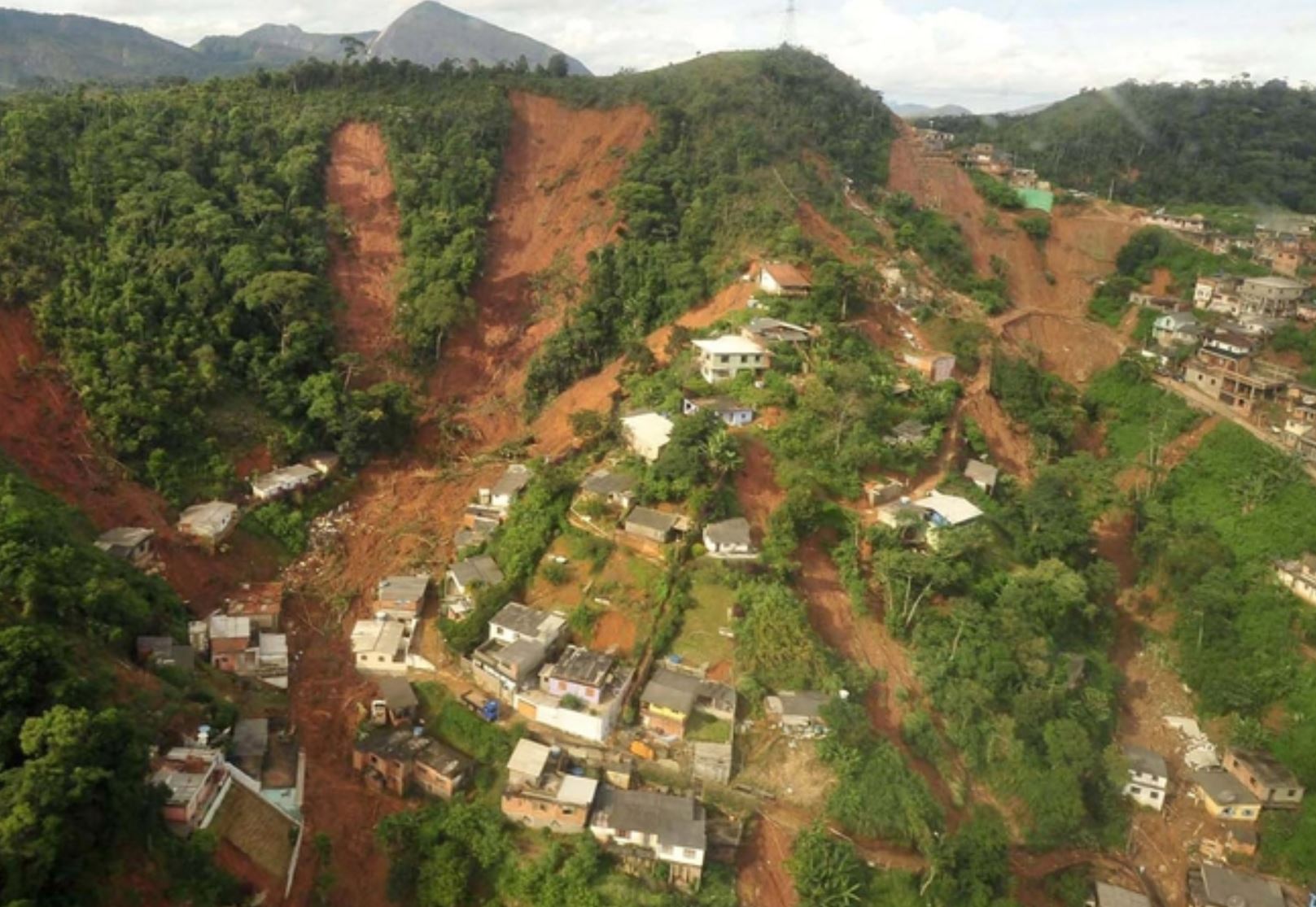16 October 2019
Landslide risk management in Rio de Janeiro
Posted by Dave Petley
Landslide risk management in Rio de Janeiro
Rio de Janeiro in Brazil is a city with significant levels of landslide risk. In April 2010, heavy rainfall triggered a large number of landslides across the city, killing hundreds of people. For example, Nova Friburgo suffered multiple landslide events with catastrophic outcomes:-

Landslides from 2010 in the Rio de Janeiro area of Brazil. Image via RTE.
.
As a result of repeated landslide disasters, Rio de Janeiro has instigated a landslide risk management programme that is impressive in its ambition and scope. Rio On Watch has published a good, detailed article, by Abby Hanna, that provides a review of this work. This provides links to a number of resources that underpin the landslide risk management work, including an excellent presentation that includes information about historic landslide events in the city.
The article provides detail about the five steps that have been taken to manage landslide risk in Rio de Janeiro:-
- Knowledge: Includes a mapping of all risk areas in the city (last completed in 2011) and slope susceptibility (using thematic maps, aerial photos, and lasers).
- Prevention: Includes the creation of Alerta-Rio (telemetric rain gauge network that began in 1996), the addition of a meteorological Doppler radar in 1999, emergency shelter points, community leader training, Rio’s Center of Operations (COR), and audible alert/alarm levels added in 2011.
- Diagnostics: Includes the development of mitigation projects in 117 communities designated as high-risk and the division of 112 communities into 10 regional sections.
- Intervention: Refers to methods and protocol for slope containment constructions, with a reported budget of R$83 million (US$21 million) for 2001-2008 and R$320 million (US$80 million) for 2009-2012.
- Monitoring: Drones, barometers, rain gauges, tracking with GPS, meteorological/weather stations with audio and video in real-time.
Underpinning the system is the “Community-Based Alert and Alarm System,” which provides a warning of heavy rainfall and, in the most vulnerable locations, triggers sirens to warn residents that landslides are possible.
Such systems are never perfect. Earlier this year, Rio de Janeiro suffered 17 fatalities as a result of heavy rainfall. But, these types of programmes certainly have their place in reducing landslide risk, and deserve further investment.


 Dave Petley is the Vice-Chancellor of the University of Hull in the United Kingdom. His blog provides commentary and analysis of landslide events occurring worldwide, including the landslides themselves, latest research, and conferences and meetings.
Dave Petley is the Vice-Chancellor of the University of Hull in the United Kingdom. His blog provides commentary and analysis of landslide events occurring worldwide, including the landslides themselves, latest research, and conferences and meetings.
Dicho evento genero preocupación e interés en los centros de investigación, varias universidades de Brasil generaron tesis de grado, se desarrollo conocimiento y se propago a los tomadores de decisiones; ahora se ven los resultados.